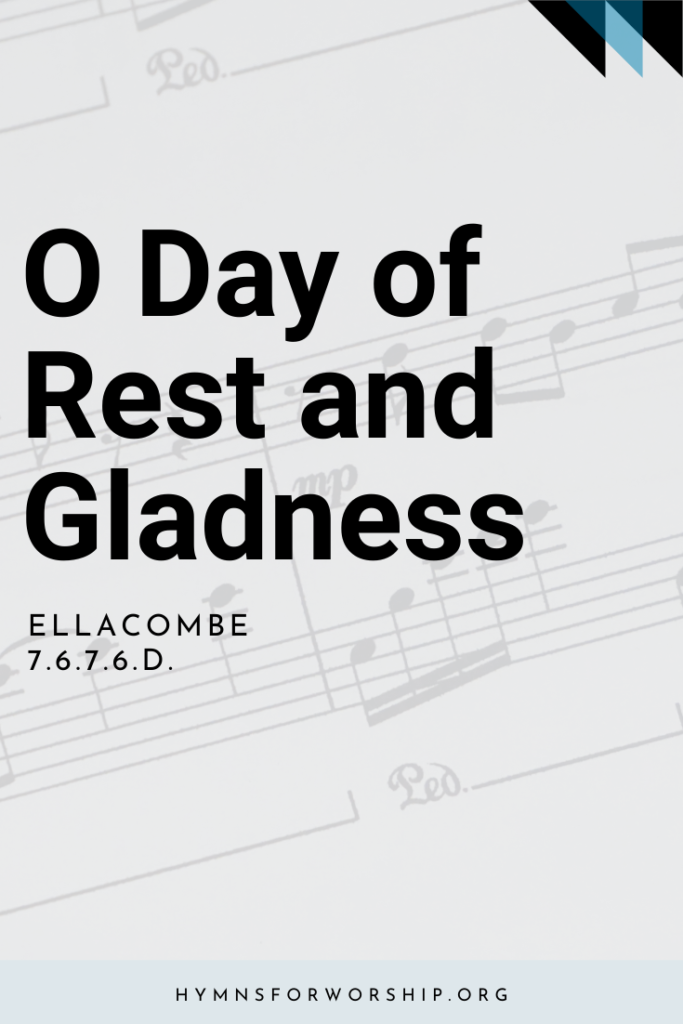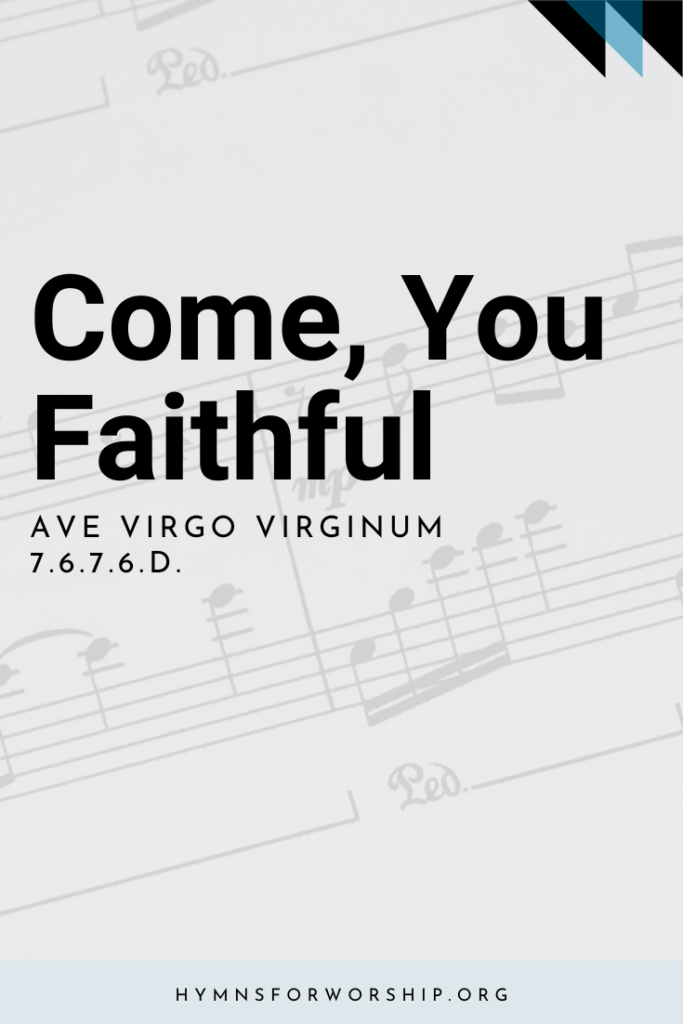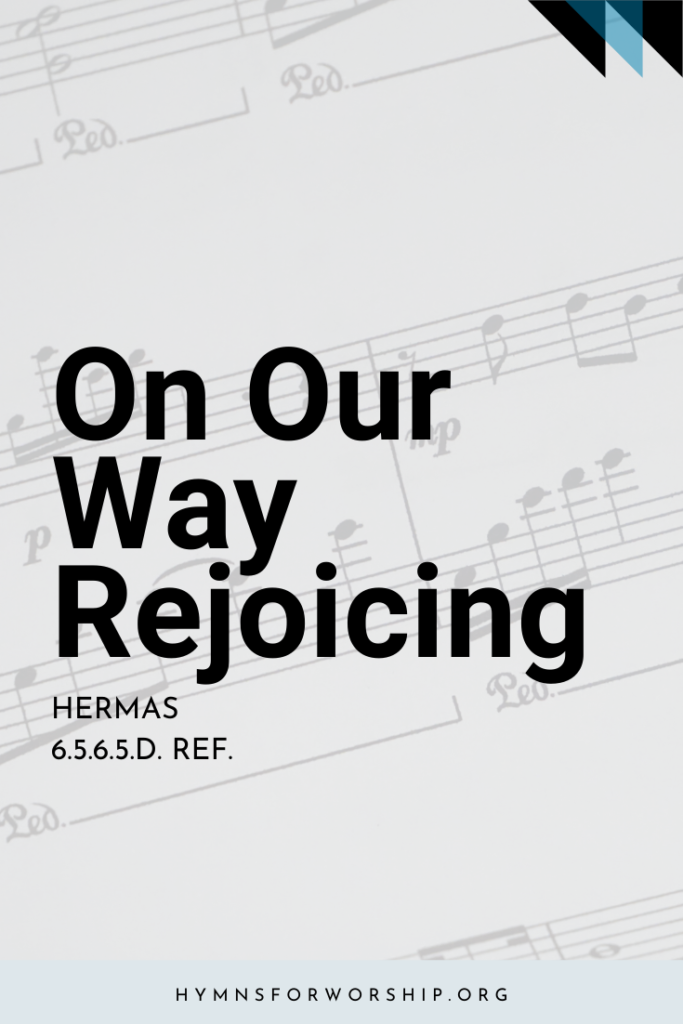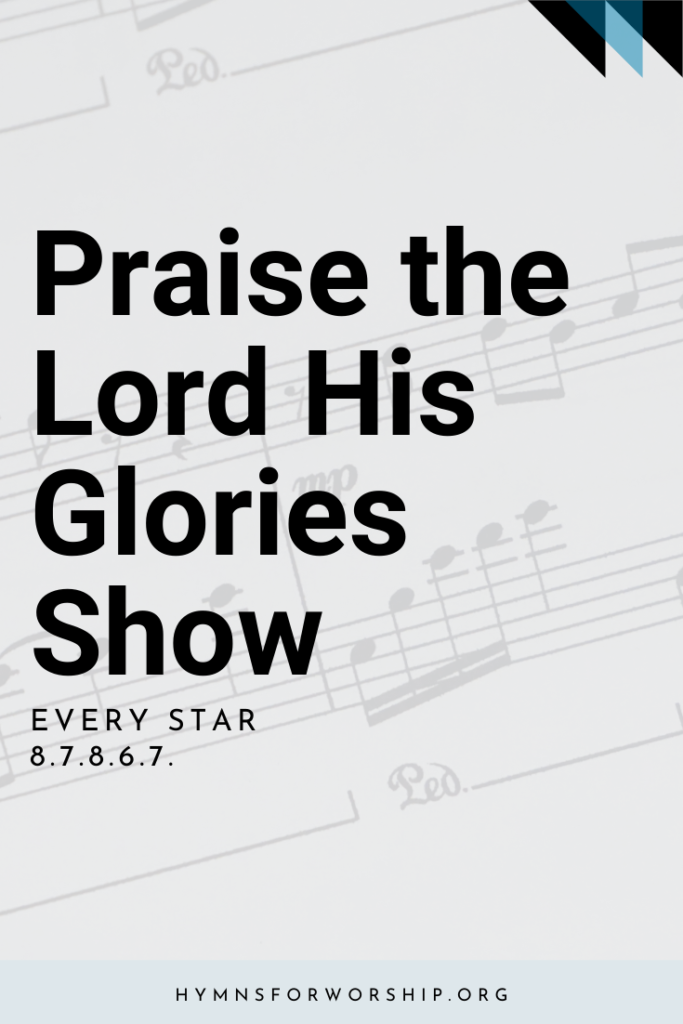DOCTRINES >> SABBATH
SDAH 382
O day of rest and gladness,
O day of joy and light,
O balm of care and sadness,
most beautiful, most bright;


Text
1
O day of rest and gladness,
O day of joy and light,
O balm of care and sadness,
most beautiful, most bright;
on thee, the high and lowly,
who bend before throne,
sing, “Holy, holy, holy,”
to the Eternal One.
2
Thou art a port protected
from storms that round us rise;
a garden intersected
with streams of paradise;
thou art a cooling fountain
in life’s dry, dreary sand;
from thee, like Pisgah’s mountain,
we view our promised land.
3
A day of sweet reflection,
thou art a day of love,
A day to raise affection
from earth to things above.
New graces ever gaining
from this our day of rest,
We reach the rest remaining
in mansions of the blessed.

Hymn Info
Biblical Reference
(a) Isa 6:3 (b) Deut 3:27 (c) Heb 4:9
Author
Christopher Wordsworth (1807-1885) alt.
Hymn Tune
ELLACOMBE
Metrical Number
7.6.7.6.D.
Tune Source
Gesangbuch der Herzogl, Hofkapelle, 1784
Hymn Score
Piano Accompaniment
Notes
Get to know the hymns a little deeper with the SDA Hymnal Companion. Use our song leader’s notes to engage your congregation in singing with understanding. Even better, involve kids in learning this hymn with our homeschooling materials.
The Sabbath was made as a unique opportunity for people to learn the characters of God. God also emphasizes that Sabbath should not be a burden but instead be a delight and a day of rest and gladness.
-Notes for SS Lesson 4th Quarter 2020 “Education.” Lesson 12 -Sabbath: Experiencing and Living the Character of God (Sunday)
This hymn is one of several written by Christopher Wordsworth to inculcate the doctrines of the church and was in his Holy Year, or Hymns for Sundays and Holydays, 1862. It is based on Psalm 118:24: “This is the day which the Lord has made; we will rejoice and be glad in it.” It exalts the Sabbath (although the author is referring to Sunday), and several metaphors are used, namely balm, port, garden, fountain, mountain and, in an omitted stanza, a ladder. There were originally six stanzas from which the SDAH has selected the first, third, the second half of the fourth, and the first half of the sixth. In SDAH stanza 3, the fifth word originally was refection, meaning eating, referring to feeding on the Word of God, though it is quite true that we should also reflect on it Wordsworth, a nephew of the famous poet William Wordsworth, was born in Lambeth, London, on October 30 1807. He was educated at the University of Cambridge, where he had a brilliant career, winning many prizes and graduating in 1830. He lectured at his college in classics and was ordained in the Anglican ministry in 1833. In 1836 he became public orator at the university and was appointed headmaster of Harrow Public School. In 1844 canon of Westminster Abbey. From 1850 to 1869 he was vicar of the small village of Stanford-in-the-Vale-cum-Goosy; Goosy was an even smaller village south of Stanford, Oxford shire. From this humble position he was called in 1869 to be bishop of Lincoln, a position that he held until a few weeks before his death at Harewood, near Leeds, Yorkshire, on March 21 1885. Wordsworth was a voluminous writer, for a part from his 127 original hymns, he wrote a commentary in the Bible, several volumes of history, some on the classics, sermons, pamphlets, and speeches.
ELLACOMBE is found in X. L. Hartig’s Mainzer Gesangbunch, 1833, but this is derived from a traditional tune of the eighteenth century. It appears in a hymnbook used in the private chapel of the duke of Wurttemberg, 1784. It first appeared in England in Hymns Ancient and Modern, 1868, with the words “Come, Sing with Holy Gladness.” It is a very easy melody to sing, for scores 1, 2, and 4 are identical.






